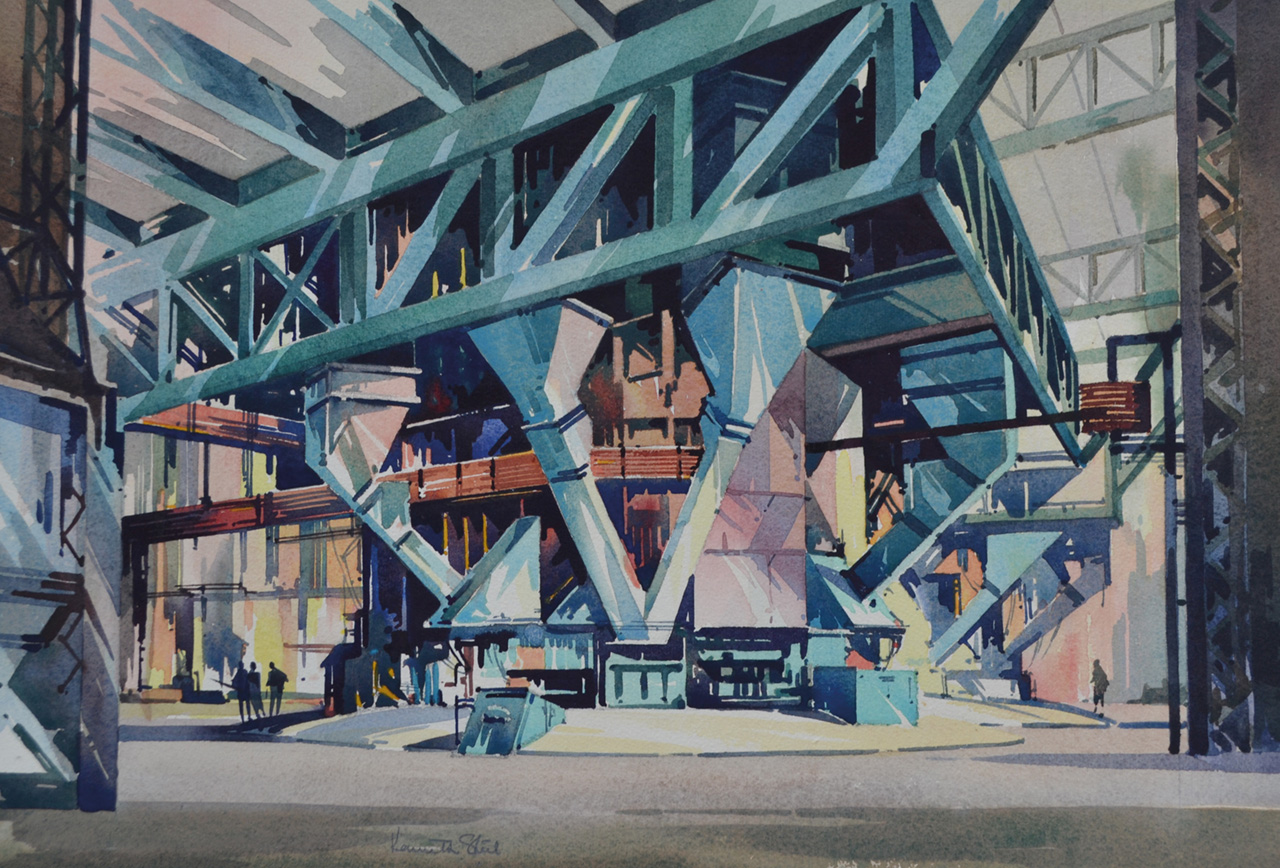Sheffield’s Steel
Sheffield artist Kenneth Steel lost everything when his home was bombed in the Second World War. Then his wife burned his newer work. Jessica Brown speaks to the man dedicated to salvaging his legacy
It’s one thing for an artist not to be recognised in his time but it’s another to not be recognised at home.
Artist Kenneth Steel’s home was Sheffield, and now, six decades after his death, appreciation for his work there is finally catching up with the rest of the UK.
Steel enjoyed a long and fruitful career as an artist of many talents. These talents meant his name quickly spread to London and Dublin, where his work was exhibited – but while many will recognise his work, and a large part of it focused on the areas surrounding Sheffield, few knew his name until very recently.
“Some people called him a forgotten artist, and this is true to some extent,” says Ed Yardley, Kenneth Steel’s biographer and co-curator of a new exhibition showcasing Steel’s work.
Among his most recognisable works are Steel’s mid-century travel posters and railway advertisements, including for Skegness, Lincolnshire and Selby Abbey.
“People will have seen the posters in the 1950s in railway stations and not realised that they’re Kenneth Steel,” says Yardley, who was surprised when he bought an engraving of Steel’s in 2008 and saw there was very little public information about him. “I wanted to find out more about him. You become a bit of a detective – I managed to trace his relatives.”
This search took him to New Zealand, where he met some of Steel’s family, and unearthed more of his work along the way.
“The more work I discovered, the more I realised how diverse he was as an artist,” Yardley says. “He was a printmaker, a watercolour painter, a perspective artist, railway artist and oil painter.”
Steel was born in Sheffield in 1906 and gained a scholarship to Sheffield School of Art when he was just 12 years old. He was tutored by Sheffield landscape artist Stanley Royle, and had one exhibition in the city early on in his career, before his work gained wider recognition.
“He became almost an overnight success. In 1932 he took some of his copper plates to a dealer in London, and this started his career,” Yardley says.
Within a few years, Steel had a solo exhibition in London, then his work was accepted into the Royal Academy of Arts. The following year, he joined the Royal Society of British Artists as its youngest member.
“This was a phenomenal amount of work and exposure over a short period of time,” Yardley says.
But alongside his professional success, Steel was dealt a tragedy. On 12 December 1940, during an air raid on Sheffield by German bombers, his family home was hit and his elderly mother and pregnant wife were killed. His house and studio were destroyed, and probably some of his artwork. Steel was homeless and spent a few years living in a rundown cottage before remarrying and working up until his death at the age of 63.
“His second wife, Grace, was so distraught – and partly on instructions from Kenneth – that she started to burn his work,” Yardley says.
After years of searching for what work remained and learning about his life, Yardley has brought together the largest collection of Steel’s work, in a bid to give him recognition locally. He has co-curated the exhibition with Lucy Cooper, exhibitions and display curator at Sheffield Museums, and says he hopes that it does justice to Steel’s “versatility and craftmanship, and his ability to draw in such a manner that it really is a true representation of a place”.
Yardley is sure there are more works out there waiting to be uncovered. He has put out a call for lost works, and encourages people with information to get in touch through the website kennethsteel.co.uk.
Places in Time: The Art of Kenneth Steel is until 2 May at Weston Park Museum

Leave a reply
Your email address will not be published.